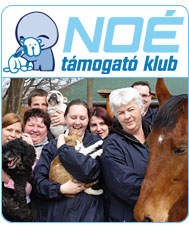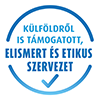Give
Why is hoof trimming important for horses?
2011.05.12.
Ideally, horses need a trim every 6 (or at most 8) weeks. Each horse is different and their hooves grow at different speeds (just like your fingernails or hair may grow faster than your best friends’), and even the seasons may affect how fast a horse’s hoof grows. In winter, it grows slower unless there are some serious problems with the hoof, so it is sufficient to take care of it every 10 weeks. However, in spring it is necessary to attend to their hoof every 6 or 7 weeks, as the fresh grass, which abounds in mineral substance and trace elements, contributes to a faster growth of the hoof. Unfortunately, the need to trim horses’ hooves is attributed to their change of lifestyle, since wild horses travel more than 10 kilometres while grazing, making their hooves degrade naturally. Irregularities in the form of hooves are a rare sight as well in nature due to natural selection. Horses with irregular hooves could not have kept up with the pace of the other horses. Domesticated horses, however, need to be attended to by a farrier regularly.
Most of the horses in our animal shelter have some sort of a problem with their hooves either because of their age, a hereditary structural weakness or their poor keeping conditions.
Gazsi’s former owners have neglected their hoof to a certain extent that made it distorted and his carpal joint became deformed as well. His hoof care is going to be a long process since it is impossible to restore his hoof at once. Our farrier will have to attend to his deformed joints as well.
Tündér Palkó used to have ungulocoriitis (inflammation of the claw corium). Thankfully, he successfully recovered from it, although the disease has left its marks. His hoof has become weaker, therefore it is imperative that his hoof be taken care of every 6 weeks, because without it it would be painful for him even to walk.
Ungulocoriitis (inflammation of the claw corium): ’Ungulocoriitis is a result of an excessive feeding, making it a classic ’welfare disease’. However, this is not the only cause of ungulocoriitis. It needs to be treated as soon as diagnosed in order to prevent more severe consequences.
This disease causes the so-called attachment apparatus to damage. The attachment apparatus loads the laminae, which connects the horny wall and the corium. The corium is also connected to the distal phalanx. Several reasons may lead to the loosening of these connections and ultimately to the development of the inflammation of the claw corium.’
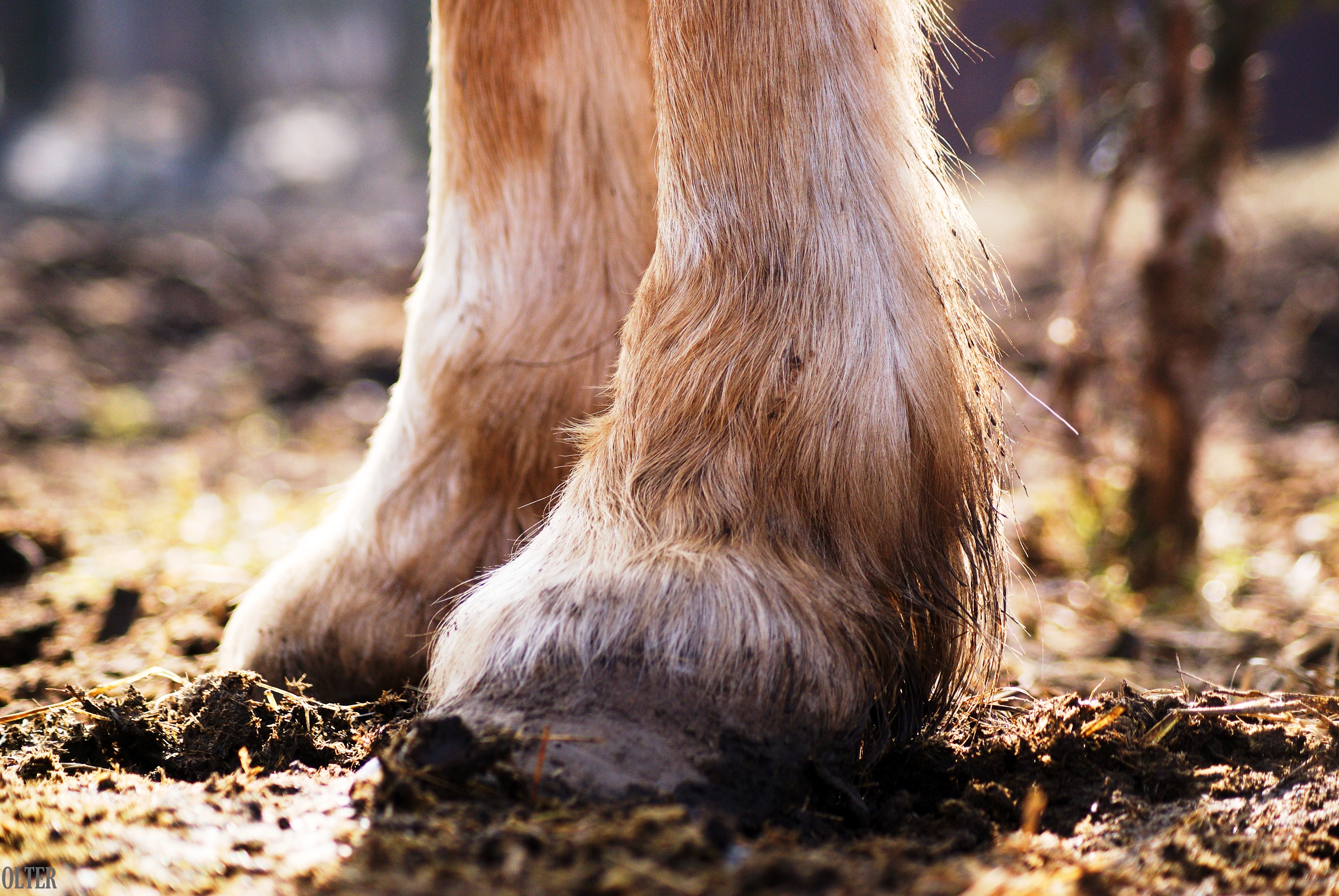
The club-footed hooves of Gazsi:
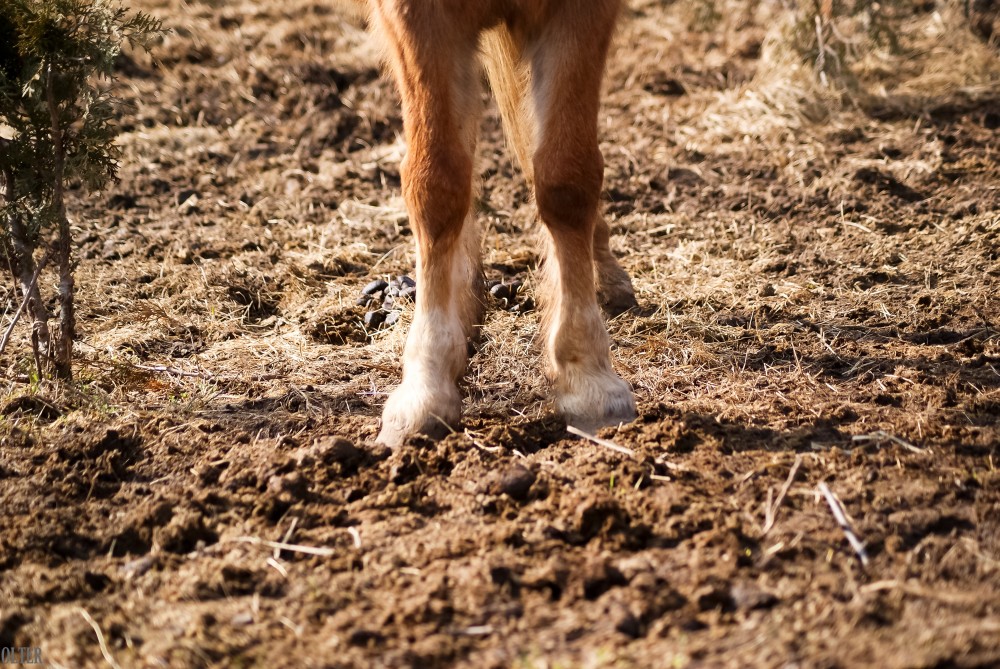
Birs has a severe chronic navicular disease. It is also of vital importance that an expert specialized in therapeutic hoof trimming perform a regular hoof care, since horses struck with such a disease are in need of a special hoof trimming in order to relieve the painful areas of the additional load.
Navicular syndrome: ’A chronic or acute inflammation of the frog or the deep digital flexor tendon. A chronic navicular syndrome is caused by excessive load while galloping or jumping, especially on deep ground.
An acute navicular syndrome develops unnoticeably and slowly over time. Putting excessive weight on the back part of the hoof, caused by low-angled foot, too short heels or branches of the horseshoe may facilitate its development. The deformity is more common in the front limbs.
A horse with this syndrome is unwilling to push himself off the ground, making his steps shorter. Successful treatments include regulating the load on the navicular bone, leaving the heel in a certain state, using wedged-shaped horseshoes that are thicker at their rear end or lag screw fixation etc.’
Vipera used to have nasty clubfeet at the time of his arrival. This deformity could only be treated by a therapeutic farrier with lengthy procedures. Despite the fact that her condition ameliorated a lot since she got here, it is still far from perfect.
Clubfoot: ’The horizontal angle of wall of a horse with clubfoot is higher than 60°. Viewed laterally, the walls of the hoof look overly steep, in some cases even almost vertical, making the heel almost as high as the walls. Consequently, the pad of the horse is more convex than it should be and the walls degrade quicker than the heel.’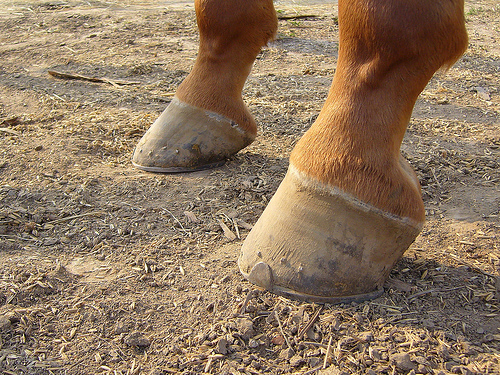
The two extremes: Horse with ’pigeon toed’ feet (on the left) and clubfoot (on the right).
Due to the problems discussed above it is of paramount importance that a professional farrier who is able to continuously take care of the irregular hooves do the trimming. Although it is certain that there are cheaper farriers available, we cannot risk employing a less experienced farrier attend to our horses that may do the hoof trimming incorrectly. An incorrect hoof trimming might cause heavy pain to our horses when walking, along with articular problems. Correcting mistreated horses is much more difficult than maintaining their current state.
For a long time, the hoof trimming has been performed by ifj. Mészáros István (www.patkolokovacs.hu), who is a respectable professional. Not only does he do his job but he checks the hooves of our horses thoroughly. Moreover, he helps us tremendously with his experience and his patience, making the hoof trimming a comfortable procedure for our horses that have behaviour problems. In spite the fact that Telivér, ArabBarbie, Vipera and Kölyök had to be sedated in the past in order to do the trimming, nowadays every horse remains calm during the procedure, with the sole exception of Vipera. Only few farriers would attend to her, since she usually keeps trying to kick him in frenzy even in sedation.
Farrier at work:
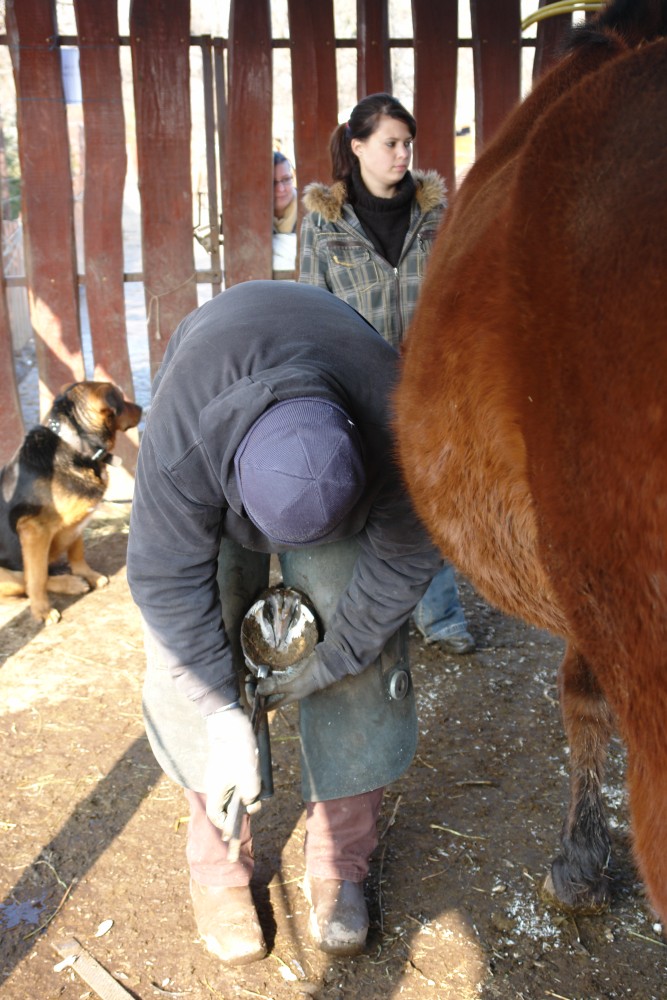 Trimming the entire troop of horses
Trimming the entire troop of horses (15 horses + Koksz + Tóth Ottó) costs us nearly
90.000 Ft, which is a great burden to our shelter.
We would appreciate any financial support for the hoof trimming of our horses. Please indicate in the subject line ”Lómentés”.Our horses can also be virtually adopted.
Our bank account number:11710002-20083777
For foreign remittance:IBAN: HU62 1171 0002 2008 3777 0000 0000
SWIFT (BIC): OTPV-HU-HB
OTP Bank / Budapest, 1102 Kőrösi Csoma sétány 6.
Our horse rescue team would appreciate any of the following items:tape for electric fence
horse feed (any type), vitamins for horses
lick salt
linseed
bran, barley, oats
horse care products (curry comb, hoof pick, horsehair brush)
enhancing gloss for mane or horsehair
long leading rope for halter
Thank you for your support!
 Share
Vissza a cikkekhez
Share
Vissza a cikkekhez





 Magyar
Magyar
 Deutsch
Deutsch











